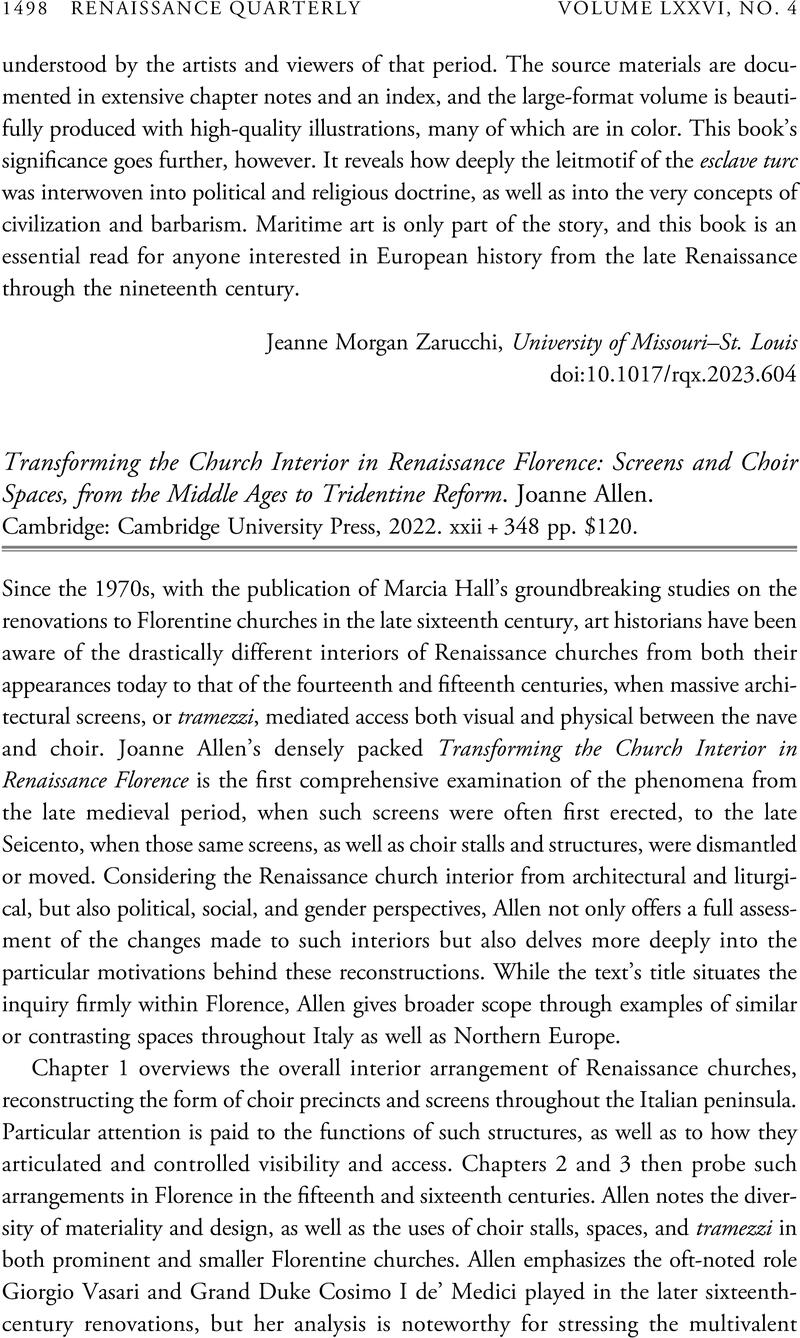No CrossRef data available.
Article contents
Transforming the Church Interior in Renaissance Florence: Screens and Choir Spaces, from the Middle Ages to Tridentine Reform. Joanne Allen. Cambridge: Cambridge University Press, 2022. xxii + 348 pp. $120.
Review products
Transforming the Church Interior in Renaissance Florence: Screens and Choir Spaces, from the Middle Ages to Tridentine Reform. Joanne Allen. Cambridge: Cambridge University Press, 2022. xxii + 348 pp. $120.
Published online by Cambridge University Press: 24 January 2024
Abstract
An abstract is not available for this content so a preview has been provided. Please use the Get access link above for information on how to access this content.

- Type
- Review
- Information
- Copyright
- Copyright © The Author(s), 2024. Published by Cambridge University Press on behalf of the Renaissance Society of America



